Tech Enthusiast Weekly(2024-07-05) : Motiff: AI-Enhanced UI Design Tool for Professional Designers
Motiff: AI-Enhanced UI Design Tool for Professional Designers
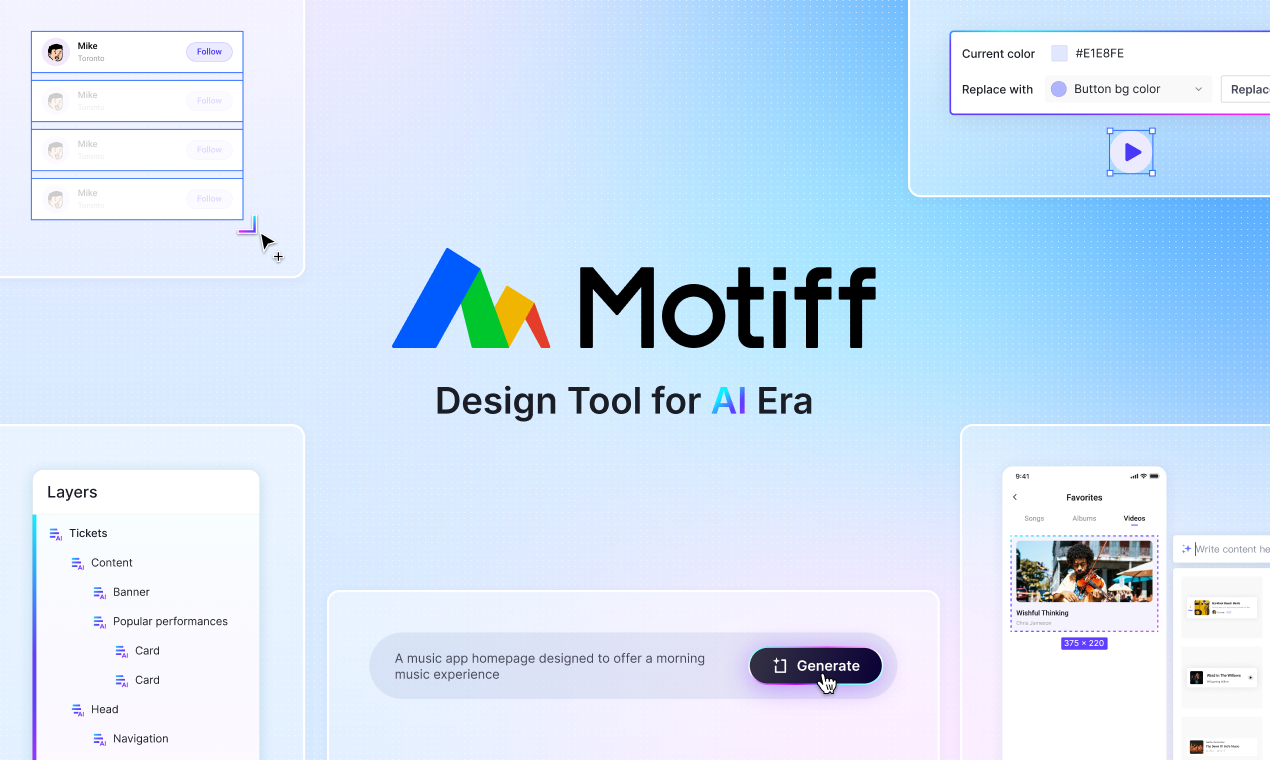
Motiff integrates AI into UI design, blending human creativity with AI efficiency. Key features include the AI Toolbox and Design Systems, promising a tenfold increase in productivity and design consistency. Explore Motiff Lab for a glimpse into the future of design.
UI design refers to the process of creating the visual elements through which users interact with devices or software.
ScoresTech News
OpenAI's GPT-5 Promises Major AI Advancements
OpenAI's GPT-5, still in early stages, promises a significant leap in AI capabilities. CEO Sam Altman describes it as a "huge leap." GPT-4o, the current flagship, is praised for its "magic." GPT-5 is expected to reach doctoral-level intelligence by 2025 or 2026.
CriticGPT, released recently, evaluates and corrects GPT-4's outputs. OpenAI has also opened up new features to free users, including customizable GPTs. GPT-4o has boosted ChatGPT's subscription demand and mobile revenue.
OpenAI remains tight-lipped about GPT-5's exact release date, emphasizing its ongoing development.
ScoresThe team from Beihang University has developed a super-resolution photonic force microscope, achieving sub-femtonewton mechanical sensing in aqueous solutions.

The team from Beihang University has recently developed a super-resolution photonic force microscope, achieving sub-femtonewton-level mechanical sensing in aqueous solutions for the first time. It detected the smallest electric field force at 108.2 aN, with a sensitivity of 1.8 fN/√Hz. This technology combines ion resonance nanoprobes, optical three-dimensional super-resolution positioning, and machine learning, addressing the challenge of weak force measurements in aqueous environments.
The applications of this microscope are extensive, particularly in studying extremely weak interactions between DNA molecules. Traditional theories suggest that complementary DNA strands require close contact to pair in aqueous solutions, but this new tool reveals the possibility of long-range forces. Additionally, the technology can be used to study interactions of molecules such as CRISPR proteins.
Detecting extremely weak forces in aqueous solutions is crucial for understanding the operation of biological molecules. Previously, the highest sensitivity for force measurements in aqueous solutions was about 10 fN/√Hz, but the new method has elevated this sensitivity to the sub-femtonewton level, providing an effective tool for studying long-range interactions of biological molecules in physiological environments.
Through theoretical analysis and experimental validation, the team improved force measurement accuracy by using lower potential well stiffness, higher positioning precision, and a large amount of positioning data. They also introduced a cylindrical lens positioning method from super-resolution imaging to refine the final steps of three-dimensional force measurement.
This research is not only scientifically significant but also opens new avenues for future studies on biological molecules.
ScoresEnhancing Cas9 Gene Editing Efficiency: A Breakthrough in Genetic Therapy

Kai Chen, an alumnus of Zhejiang University and a Ph.D. from the California Institute of Technology, is currently conducting postdoctoral research at the University of California, Berkeley. He collaborates with his advisor, Jennifer Doudna, focusing on the improvement of the CRISPR gene editor. Their research has revealed the key to enhancing the efficiency of the Cas9 protein—the modification of the wedge domain.
The CRISPR system, composed of guide RNA and Cas proteins, is widely used in gene editing. However, the enhancement of Cas9 efficiency has been a challenge. Chen Kai has significantly improved the editing efficiency by modifying the GeoCas9 protein through directed evolution strategies.
Their findings indicate that amino acid mutations in the wedge domain can strengthen the binding of Cas9 to DNA and expand the recognition range. This strategy is not only applicable to GeoCas9 but can also be extended to other Cas9 proteins, with efficiency improvements of over a hundredfold.
Chen Kai's research not only changes our understanding of the structural function of Cas9 proteins but also provides a new pathway for developing more efficient gene editing tools. His work combines theory and application, showcasing the depth and breadth of scientific research.
ScoresGlobal Undersea Cable Project to Transfer Renewable Energy
Entrepreneurs are planning a massive undersea cable project. Six cables, each over 2,000 miles long, would span the Atlantic, connecting Europe and North America with the aim of transmitting 6 gigawatts of renewable energy. This is equivalent to the power output of six nuclear plants, moving energy at the speed of light.
The concept is to harness the sun's daily cycle. When Europe is sunny and has excess power, it could send this energy west to the U.S. Later, when the sun is over America, Europe would receive the energy back. It's a straightforward idea.
This is not merely a fantasy. Similar projects are emerging globally. Europe already connects with its neighbors through sea cables. The UK links with Belgium, Norway, the Netherlands, and Denmark. They are also considering a solar and wind link with Morocco.
Australia plans to send solar power to Singapore. India and Saudi Arabia aim to connect via the Arabian Sea. These cables are not just about energy; they are reshaping geopolitics, shifting power struggles to the ocean depths.
ScoresUltra-Precise Atomic Clock Sets New Standards in Timekeeping
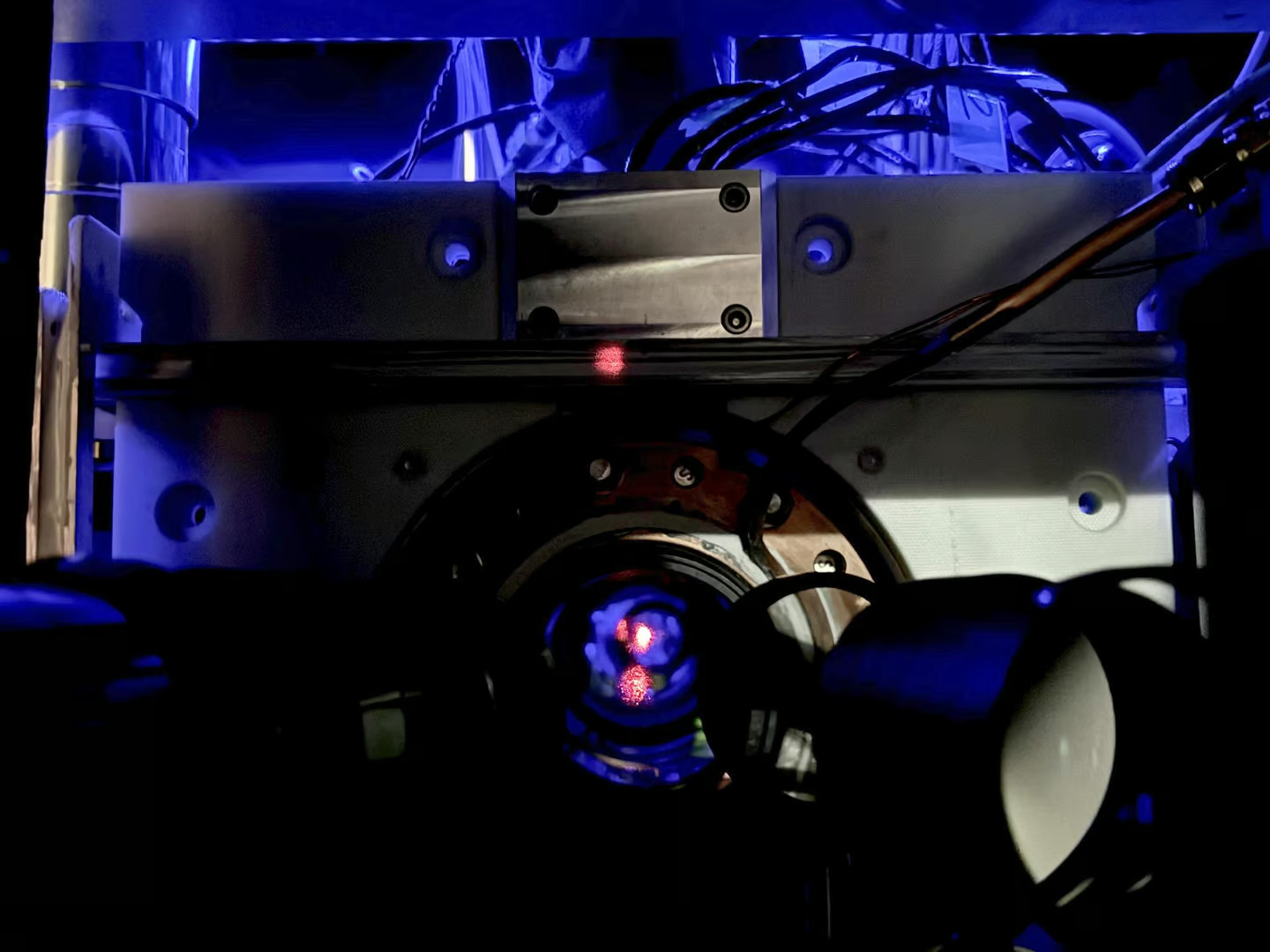
Scientists have constructed the world's most accurate clock. Its precision is such that it would only lose one second over 300 billion years—more than twice the age of the universe. This clock employs strontium atoms, which oscillate 429 trillion times per second, a frequency measured by visible light rather than microwaves.
The clock's accuracy is vital for technologies such as GPS and communication. It also paves the way for new discoveries in physics, aiding in the measurement of how gravity influences time on minute scales. This innovation could reveal subtle phenomena predicted by theories like Einstein's general relativity.
The clock operates by confining thousands of strontium atoms within a laser grid, known as an "optical lattice." This configuration minimizes errors arising from laser fluctuations and atomic collisions. The outcome is a precision of a trillionth of a second over 300 billion years.
This advancement in timekeeping not only enhances our everyday technologies but also broadens our comprehension of the universe's fundamental laws.
ScoresMIT Researchers Uncover How Microscopic Ice Flaws Affect Global Sea Levels


MIT researchers have developed a model to predict ice flow based on microscopic flaws in ice. This model reveals how these tiny defects influence glacier movement and, consequently, sea level rise.
Traditionally, ice sheets were seen as monolithic. However, this new model shows they respond variably to warming. It focuses on two microscopic mechanisms: "dislocation creep" and "grain boundary sliding." These mechanisms determine how ice deforms under stress.
The model uses data like environmental temperature and ice crystal size to estimate which mechanism dominates in different areas. This helps predict where ice is more likely to flow and melt into the sea.
Comparing the model's predictions with actual ice flow data from Antarctica shows good agreement. This suggests the model can accurately forecast future ice movement and sea level rise.
This research is crucial as it provides a more nuanced understanding of how ice sheets respond to climate change. It helps refine predictions of catastrophic sea level rise, aiding in preparedness and mitigation efforts.
ScoresTsinghua team develops wide-area wavefront sensing chip, revolutionizing astronomical observation technology.
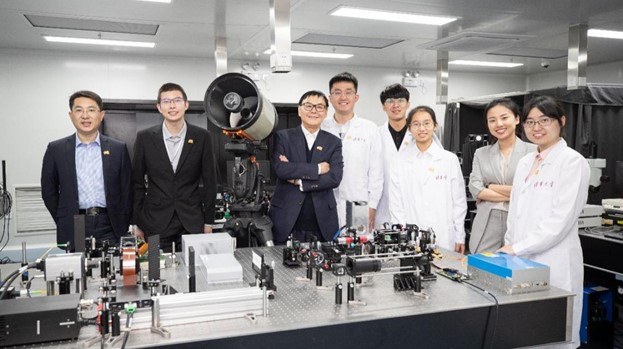
Atmospheric turbulence, akin to ghostly apparitions in the air, has long plagued astronomical observations. A team from Tsinghua University has developed the Wide-field Wavefront Computing Sensor Chip (WISE), which achieves real-time detection and prediction of atmospheric turbulence within a range of over 1100 arcseconds. This technology boasts a large field of view, high resolution, and strong robustness, with its sensing range nearly a thousand times greater than traditional methods.
The detection capability of the WISE chip is equivalent to the combined power of hundreds or even thousands of traditional wavefront sensors. It is widely applied in optical systems, enabling extensive detection and prediction of atmospheric turbulence, correcting turbulence disturbances, and achieving efficient collection and precise reconstruction of optical signals over large areas.
In a ground-to-moon observation experiment, WISE achieved real-time detection of approximately 500 spatially coherent turbulent wavefronts within a 1100 arcsecond field of view at a speed of 30Hz. The observational performance of a single chip is equivalent to nearly 1000 traditional wavefront sensors.
The WISE chip has broken through the barriers to wide-field atmospheric turbulence observation, restored the spatially non-uniform distribution of atmospheric turbulence, and revealed the dynamic patterns of atmospheric turbulence. Based on the WISE chip and a spatio-temporal neural network model, high-precision turbulence prediction within a large field of view has been achieved, reducing the predicted wavefront error from 224nm to 109nm, a significant improvement over traditional adaptive optics.
The Imaging and Intelligent Technology Interdisciplinary Team at Tsinghua University continues to innovate in the field of computational imaging, empowering astronomy with computation and opening a new chapter in computational astronomical imaging. In the future, the laboratory will further leverage the advantages of meta-imaging wide-field wavefront sensing to support the next generation of wide-field, high-resolution ground-based optical sky surveys.
ScoresTools
Skott: The Autonomous AI Marketer Revolutionizing Content Creation
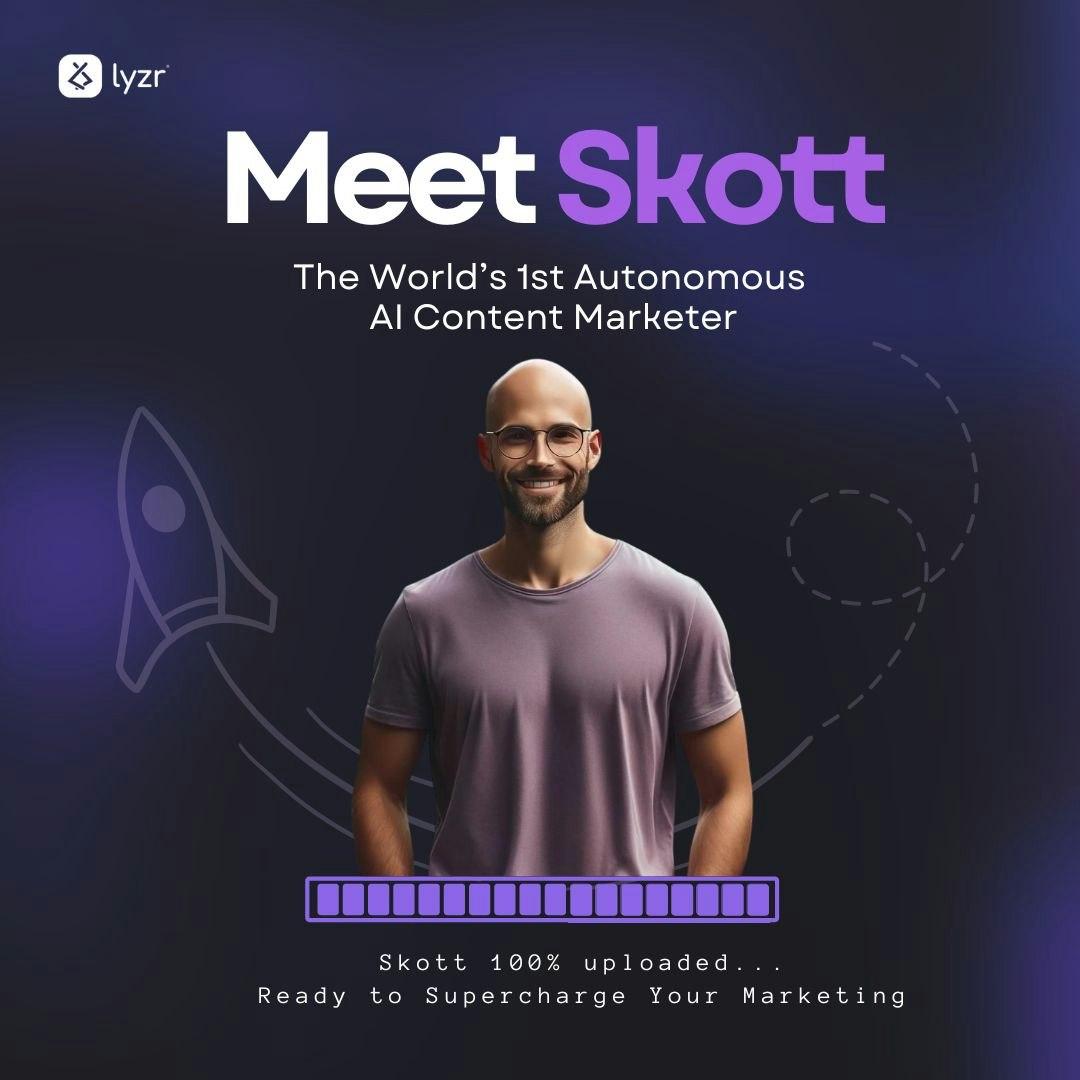
Skott, an AI, continuously writes blogs and social media posts around the clock. It operates 24/7, generating a massive volume of content. Despite its efficiency, Skott's writing lacks the depth that a human can provide.
ScoresEXPOSE-4: Effortless Local Service Sharing Tool

EXPOSE streamlines service sharing with no installs or configurations required, making it perfect for web projects and webhooks. Instantly receive a custom URL.
Webhooks: automated messages sent by apps in response to event triggers.
Insights: EXPOSE simplifies technical setup, ideal for quick and efficient web projects. Webhooks automate communication, saving time.
ScoresWebsim: AI-Powered Web Design Tool for CSS and JavaScript
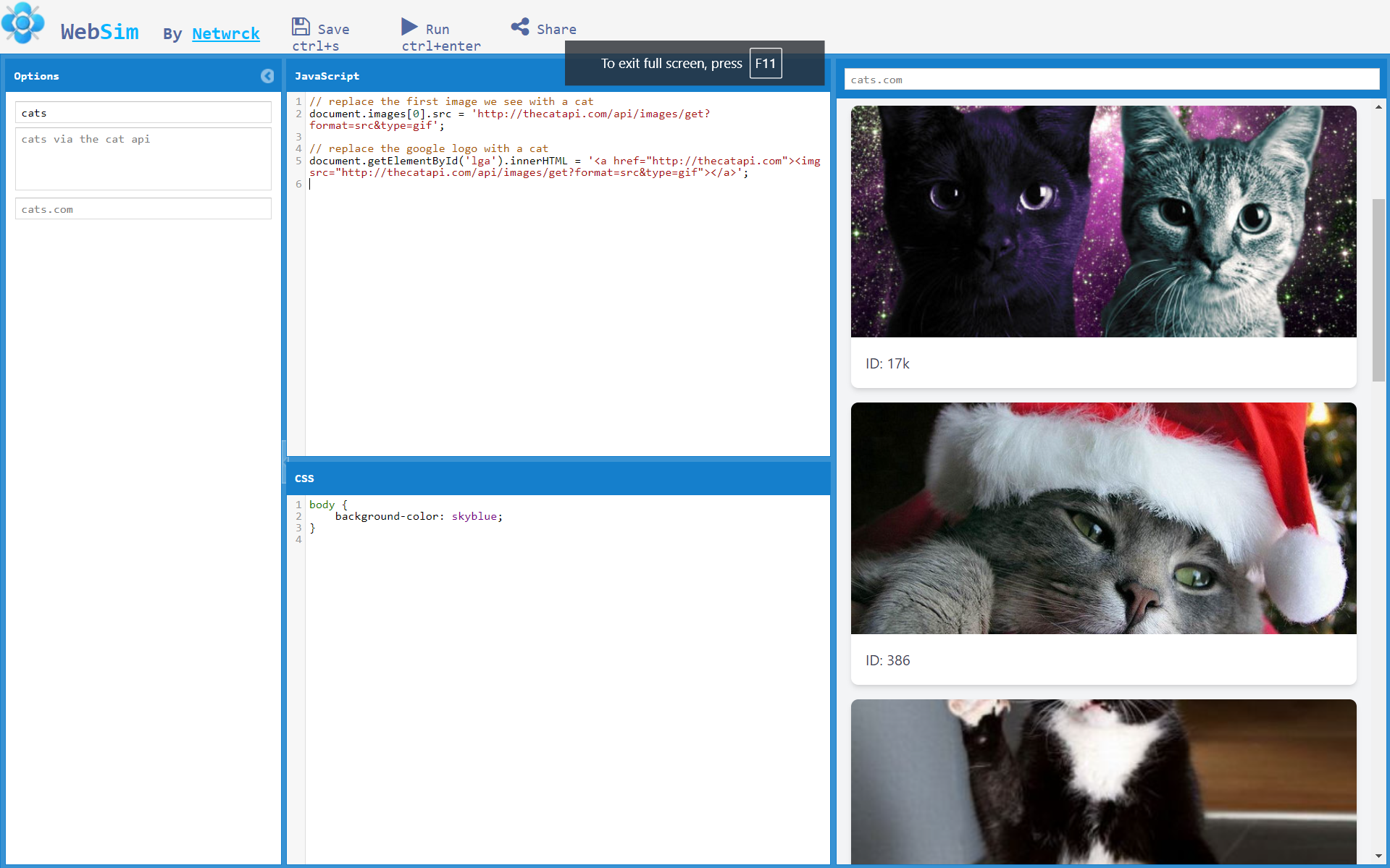
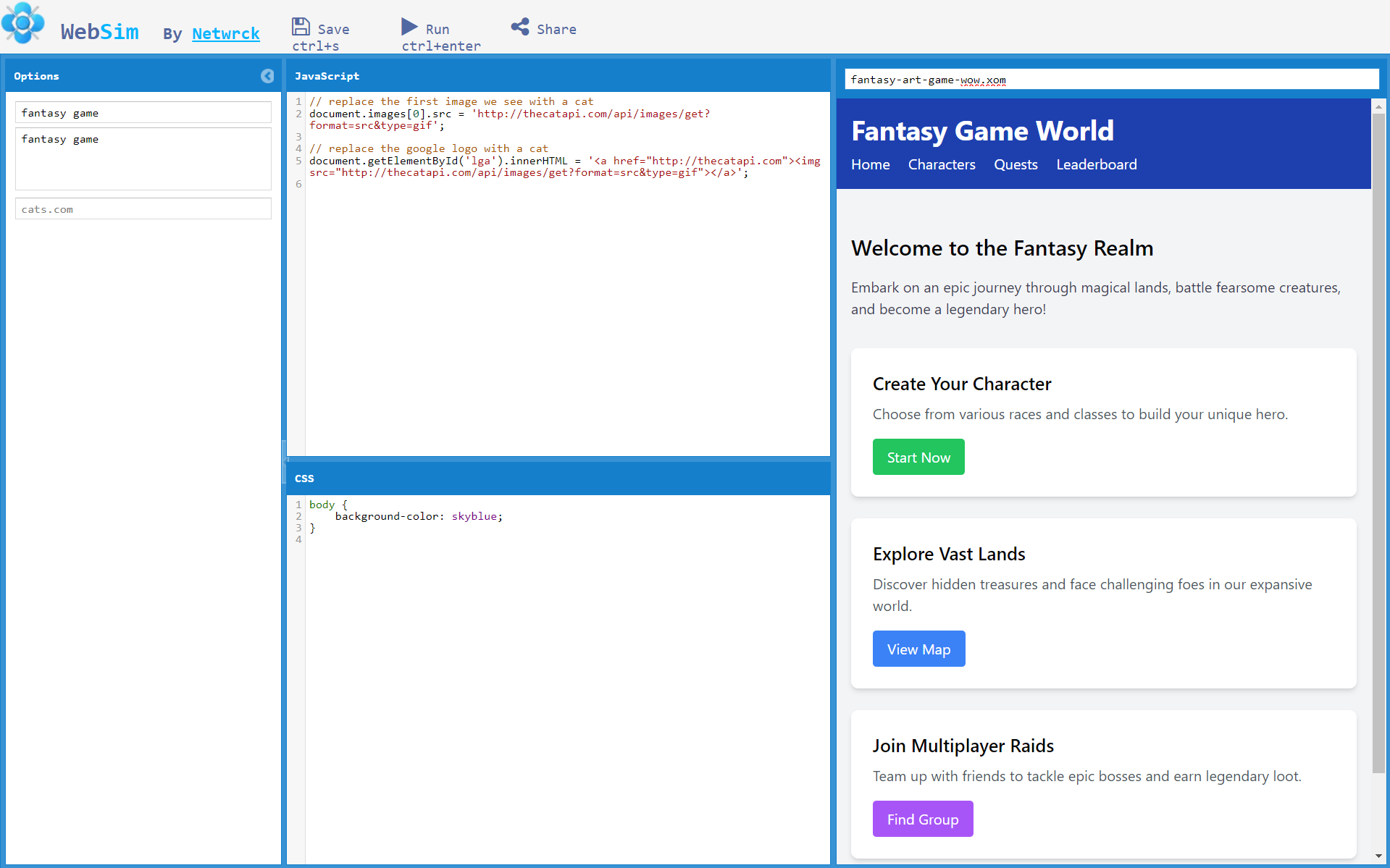
Websim, an AI tool, simplifies web design by generating essential CSS and JavaScript for styling and interactivity. Users can design their projects and then share their creations.
CSS governs a webpage's appearance, while JavaScript adds dynamism to pages. Together, they form the core of web development.
Websim democratizes web design, making it accessible to everyone.
ScoresDeepSpeed: A Comprehensive Toolkit for Optimizing Deep Learning

DeepSpeed, a Microsoft project on GitHub, enhances deep learning efficiency. It provides optimization tools since 2020. Key features include infrastructure setup, performance testing, and customization of core functionality. Documentation and examples guide users.
Deep learning, a subset of machine learning, utilizes neural networks with numerous layers to analyze data. Optimization tools like DeepSpeed improve the speed and accuracy of these models, particularly beneficial for large-scale projects.
Scores"Blazingly Fast Semantic Code Search with Archivist AI"
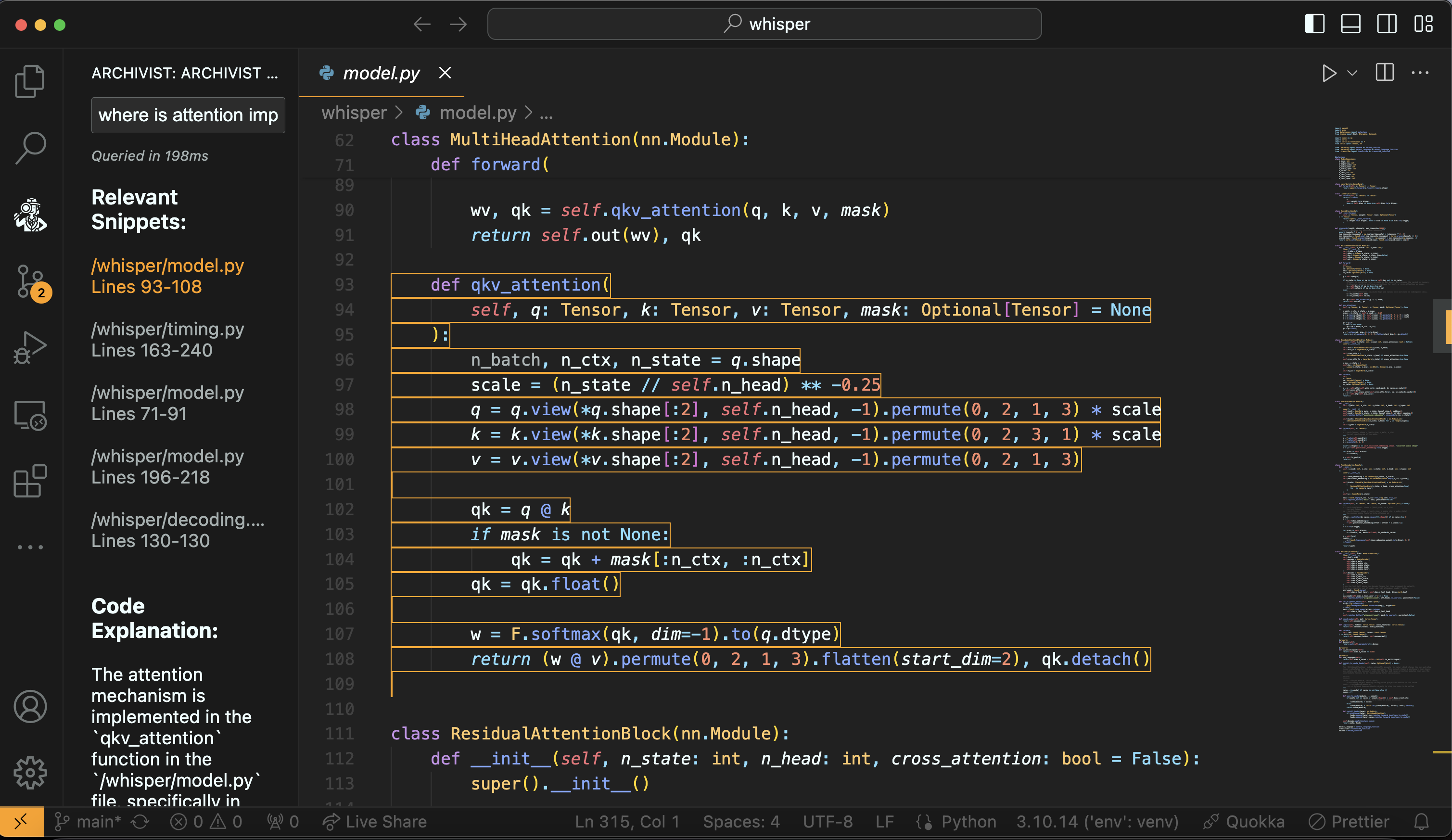
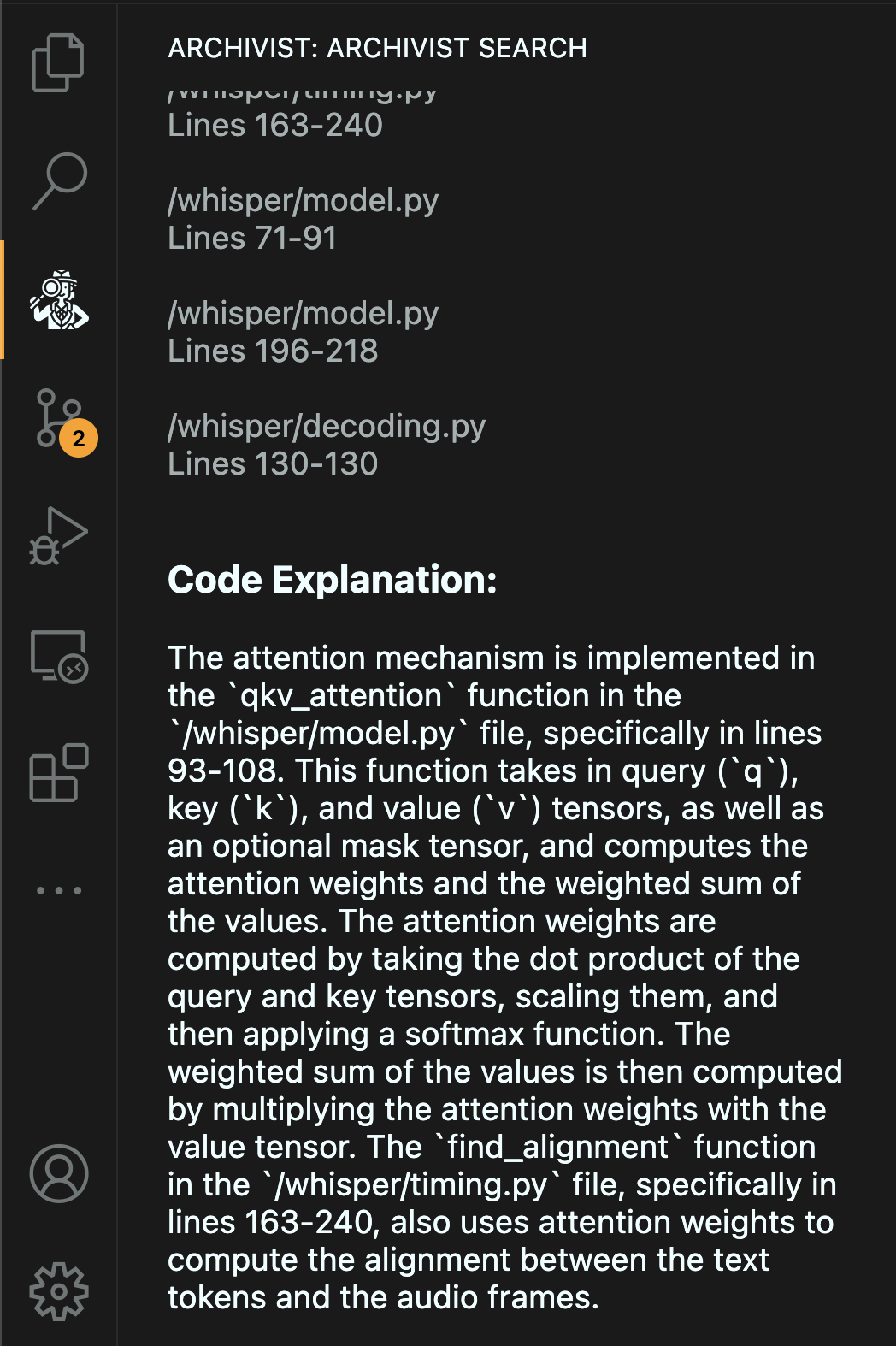
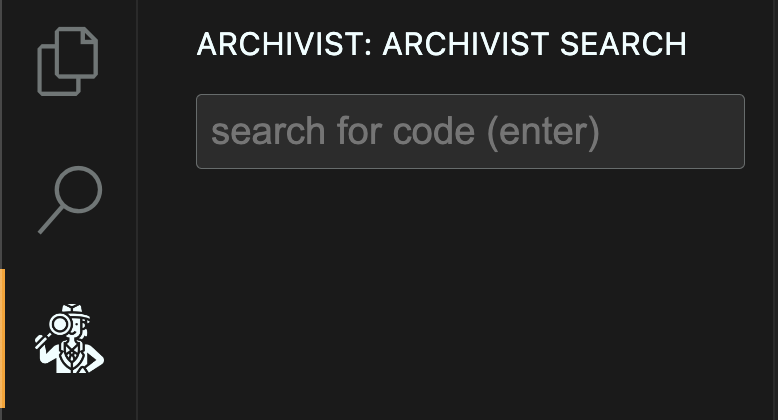

Archivist AI speeds through codebases, indexing and querying swiftly. It updates in real-time, ensuring the index remains current. The aim is to streamline code navigation, allowing developers to concentrate on writing rather than searching.
Semantic search goes beyond keyword matching, understanding code intent and context. This technology simplifies code exploration, providing pertinent results rapidly.
Semantic search: A method of search that considers the meaning of queries and content, not just keywords. It uses natural language processing to understand context and intent, improving search accuracy.
Scores"Dify: Revolutionizing Middleware with Rapid Global Growth"
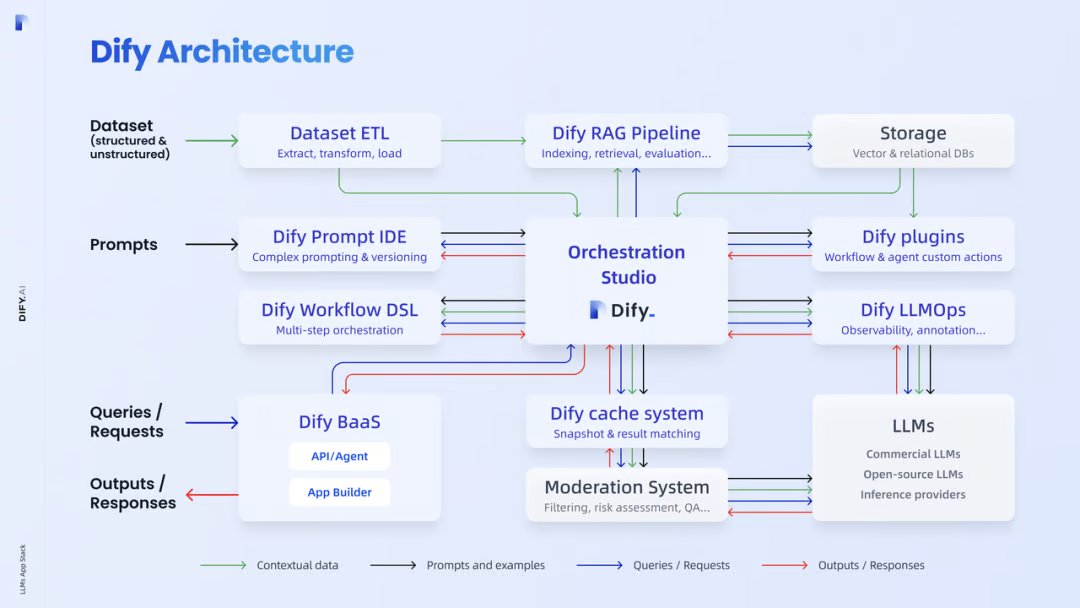
Zhang Luyu, having served millions of developers, now establishes Dify, focusing on the middleware layer for large models. Dify has achieved the top global monthly growth within a year, with installations exceeding 400,000.
Middleware for Large Models: Refers to the software layer in large-scale systems that connects different modules or components, enabling them to work together efficiently.
Dify's rapid rise underscores the market's urgent need for efficient middleware.
ScoresAI Kaleidoscope: Aggregating over 1200 AI tools and real-time news.

AI Kaleidoscope:
- Over 1200 AI tools
- Comprehensive coverage for copywriting, video, and painting
- Real-time AI news, trending searches
- Official website: https://www.aiwht.com/
Brief Review: A one-stop platform for AI tools and information. Practical, convenient, with no cumbersome operations.
Explanation:
- AI tools: Software or applications developed using artificial intelligence technology for automating various tasks.
- Real-time AI news: Immediately updated news and information about artificial intelligence.
- Trending searches: Topics or keywords with high search volumes on the internet.
GitHub Repository for New Grad Tech Jobs 2024-2025
SimplifyJobs/New-Grad-Positions on GitHub tracks entry-level tech jobs for 2024-2025 graduates. Focused on the U.S., Canada, and global remote roles. Users can add or edit job listings via GitHub issues. Simplify automates updates and streamlines contributions. New application buttons—gray for standard, blue for Simplify's one-click feature—enhance efficiency.
GitHub: a platform for hosting and collaborating on code projects. Entry-level: jobs suitable for those with little to no professional experience. PM: Product Manager, a role focusing on product planning and development. Quant: Quantitative analyst, uses math and statistics for financial analysis.
ScoresComprehensive Overview of Hugging Face's Transformers Toolkit
"Huggingface/transformers" is a toolkit for NLP, focusing on machine learning models. Launched in 2018, it's not a fork but a primary project. It boasts over 16,000 commits, indicating active development.
Key features include directories for documentation, examples, and model cards. It supports tasks like translation and text generation, using models such as BERT and GPT.
This toolkit is user-friendly, aiding both novices and experts in NLP.
NLP (Natural Language Processing): A field of AI focusing on the interaction between computers and human language.
BERT and GPT: Advanced AI models designed for understanding and generating human-like text.
ScoresAutomating Web Browser Testing with Microsoft's Playwright
Playwright, a GitHub project by Microsoft, automates web browser testing. It supports Chromium, Firefox, and WebKit. Designed for end-to-end testing, it simplifies writing tests for web apps across different browsers.
The project includes configuration files, documentation, and examples. It's actively maintained, with over 12,782 commits.
Playwright is crucial for developers ensuring their apps work seamlessly across various platforms.
Explanation:
- End-to-end testing: A method that tests the entire software product from beginning to end to ensure the application flow behaves as expected.
- Chromium, Firefox, WebKit: Popular web browsers or their open-source projects.
- npm: A package manager for JavaScript programming language.
"Enhancing Computational Efficiency in Neural Networks"
FlashAttention, by Dao et al., boosts neural network speed by optimizing memory and I/O operations. Introduced at NeurIPS 2022, it maintains fast and memory-efficient attention mechanisms.
FlashAttention-2, presented at ICLR 2024, further enhances parallelism and work distribution, accelerating attention processes.
Both papers aim to improve computational efficiency in neural networks, which is crucial for advancing AI.
Explanation:
- Neural networks: Computer systems modeled after the human brain, capable of learning from data.
- Attention mechanisms: Techniques in neural networks that help focus on specific parts of data.
- Parallelism: Simultaneously executing multiple tasks to speed up processing.
- Computational efficiency: Using fewer resources (like time and memory) to achieve the same task.
AI-Powered Poetry Matching App: Bridging Art and Technology

"诗境" is an AI app that pairs photos with ancient Chinese poetry. Users upload images, and the app matches them with poems. Features include translations, multiple poem options, and customizable card designs for sharing.
Tech-wise, it uses Vue for the frontend, Python and MySQL for the backend. AI components include Gemini, LangChain, m3e, and chroma.
This tool helps those who capture beauty but struggle to express it poetically. It blends technology and culture, making poetry accessible and shareable.
Explanations:
- Vue: A popular JavaScript framework for building user interfaces.
- Python: A programming language known for its readability and versatility.
- MySQL: A widely used database management system.
- AI components: Specific technologies or models used in artificial intelligence to analyze and process data.
Resource
Twitter: Marc Lou
Re Everything I learned as a solopreneur: How to find startup ideas, launch fast, and get profitable ↓ https://marclou.beehiiv.com/
Twitter: Justin Welsh
This is called "Passive Selling." I recently spent a week in Mexico teaching other six and seven-figure creators how to do this. Here's a guide I wrote for them to get: https://justinwelsh.link/7.02.24.x2
Twitter: Marc Lou
"Re Everything I learned as a solopreneur: How to find startup ideas, launch fast, and get profitable ↓https://marclou.beehiiv.com/"
Twitter: Saito
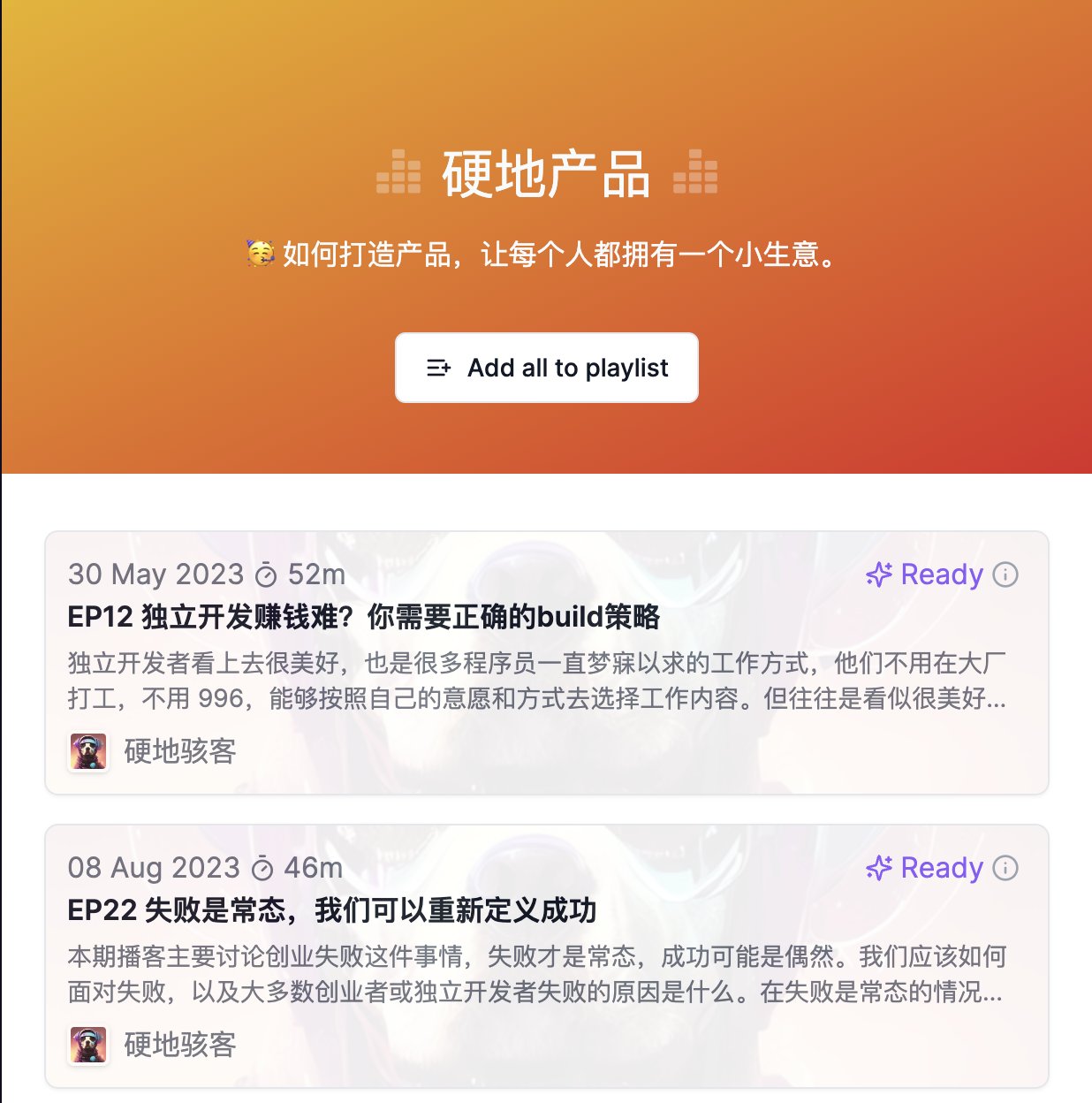
I've organized all 65 episodes of the "Hardcore Hacker" podcast into an album, which focuses on how Hardcore Hackers create products. The episodes cover, but are not limited to, starting from the community, building an MVP, scaling, pricing, and collecting payments, among other topics. It even includes our own case studies. All content is publicly available and can be saved for later viewing. 👉 https://podwise.ai/dashboard/collections/8